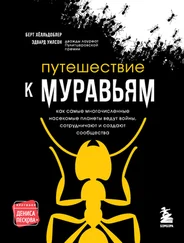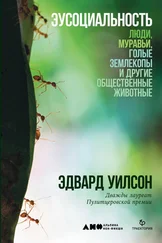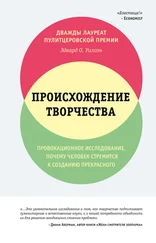Соотношение полов у общественных насекомых.Robert L. Trivers and Hope Hare, «Haplodiploidy and the evolution of the social insects» Science 191: 249–263 (1976).
Анализ соотношения полов.Andrew F. G. Bourke and Nigel R. Franks, Social Evolution in Ants (Princeton, NJ: Princeton University Press, 1995).
Субсоциальные пауки.J. M. Schneider and T. Bilde, «Benefits of cooperation with genetic kin in a subsocial spider» Proceedings of the National Academy of Sciences, U.S.A. 105(31): 10843-10846 (2008).
Помощники по уходу за птенцами.Stuart A. West, A. S. Griffin, and A. Gardner, «Evolutionary explanations for cooperation» Current Biology 17: R661-R672 (2007).
Естественная история, помощники у птиц.B. J. Hatchwell and J. Komdeur, «Ecological constraints, life history traits and the evolution of cooperative breeding» Animal Behaviour 59(6): 1079–1086 (2000).
19. Зарождение новой теории эусоциальности
Образование элементарных общественных групп.J. W. Pepper and Barbara Smuts, «A mechanism for the evolution of altruism among nonkin: Positive assortment through environmental feedback» American Naturalist 160:205–213 (2002); J. A. Fletcher and M. Zwick, «Strong altruism can evolve in randomly formed groups» Journal of Theoretical Biology 228:303–313 (2004).
Примитивная общественная организация у термитов.Barbara L. Thorne, Nancy L. Breisch, and Mario L. Muscedere, «Evolution of eusociality and the soldier caste in termites: Influence of accelerated inheritance» Proceedings of the National Academy of Sciences, U.S.A. 100:12808-12813 (2003).
Рабочие муравьи как роботы.Martin A. Nowak, Corina E. Tarnita, and Edward O. Wilson, «The evolution of eusociality» Nature 466:1057–1062 (2010).
Групповой отбор и сверхорганизм.Bert Hölldobler and Edward O. Wilson, The Superorganism: The Beauty, Elegance, and Strangeness of Insect Societies (New York: W. W. Norton, 2009).
20. Что собой представляет человеческая природа?
Введение в теорию генно-культурной коэволюции.Charles J. Lumsden and Edward O. Wilson, «Translation of epigenetic rules of individual behavior into ethnographic patterns» Proceedings of the National Academy of Sciences, U.S.A. 77(7): 4382–4386 (1980): «Geneculture translation in the avoidance of sibling incest» Proceedings of the National Academy of Sciences, U.S.A. 77(10): 6248–6250 (1980): Genes, Mind, and Culture: The Revolutionary Process (Cambridge, MA: Harvard University Press, 1981); Edward O. Wilson, Biophilia (Cambridge, MA: Harvard University Press, 1984).
Развитие теории генно-культурной коэволюции.Charles J. Lumsden and Edward O. Wilson, Promethean Fire: Reflection on the Origin of the Mind (Cambridge, MA: Harvard University Press, 1983).
Гены и культура.Luigi Luca Cavalli-Sforza and Marcus W. Feldman, Cultural Transmission and Evolution: A Quantitative Approach (Princeton, NJ: Princeton University Press, 1981); Robert Boyd and Peter J. Richerson, Culture and the Evolutionary Process (Chicago: University of Chicago Press, 1985). В 1976 году Маркус Фельдман и Луиджи Кавалли-Сфорца опубликовали результаты проведенного ими анализа в работах: «Cultural and biological evolutionary processes, selection for a trait under complex transmission» Theoretical Population Biology 9: 238–259 (1976) и «The evolution of continuous variation, II: Complex transmission and assortative mating» Theoretical Population Biology 11: 161–181 (1977). Они описали два состояния признака, «опытный» и «неопытный»; вероятность состояния признака зависит от фенотипа родителя и генотипа потомка. Признаком считается общая одаренность. Ни тогда, ни позже никто не обратил внимания на многочисленные данные, свидетельствующие о закреплении эпигенетических правил в когнитивной деятельности человека. Историческая сводка исследований в области генно-культурной коэволюции, включая процитированные работы, приведена в: Charles J. Lumsden and Edward O. Wilson, Genes, Mind, and Culture: The Coevolutionary Process (Cambridge, MA: Harvard University Press. 1981), pp. 258–263.
Эволюция переносимости лактозы взрослыми людьми.Sarah A. Tishkoff et al., «Convergent adaptation of human lactase persistence in Africa and Europe» Nature Genetics 39(1): 31–40 (2007).
Генно-культурная коэволюция и повышение разнообразия человеческого рациона.Olli Arjama and Tima Vuoriselo, «Gene-culture coevolution and human diet» American Scientist 98:140–146 (2010).
Эволюция рациона человека.Richard Wrangham, Catching Fire: How Cooking Made Us Human (New York: Basic Books, 2009).
Генно-культурная коэволюция и избегание инцеста.Приведенные в этой главе соображения об избегании инцеста заимствованы в основном из работы: Edward O. Wilson, Consilience: The Unity of Knowledge (New York: Knopf, 1998) с привлечением свежих литературных данных.
Подтверждение эффекта Вестермарка.Arthur P. Wolf, Sexual Attraction and Childhood Association: A Chinese Brief for Edward Westermarck (Stanford, CA; Stanford University Press, 1995); Joseph Shepher, «Mate selection among second generation kibbutz adolescents and adults: Incest avoidance and negative imprinting» Archives of Sexual Behavior 1(4): 293–307 (1971); William H. Durham, Coevolution: Genes, Culture, and Human Diversity (Stanford, CA: Stanford University Press, 1991).
Заболевания, связанные с инбридингом.Jennifer Couzain and Joselyn Kaiser, «Closing the net on common disease genes» Science 316: 820–822 (2007); Ken N. Paige, «The functional genomics of inbreeding depression: A new approach to an old problem» BioScience 60: 267–277 (2010).
Экзогамия и эффект Вестермарка.Многочисленные культурные аспекты экзогамии, связанные с избеганием инцеста, обсуждаются в монографии: Bernard Chapais, Primeval Kinship: How Pair-Bonding Gave Rise to Human Society (Cambridge, MA: Harvard University Press, 2008).
Альтернативное объяснение эффекта Вестермарка.William H. Durham, Coevolution: Genes, Culture, and Human Diversity (Stanford, CA: Stanford University Press, 1991).
Читать дальше
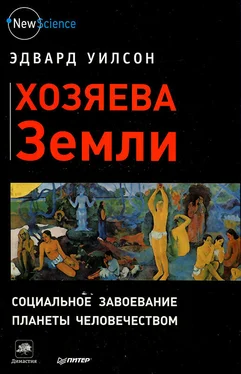
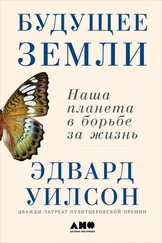




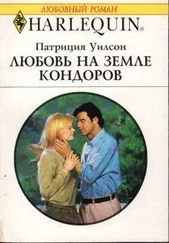
![Эдвард Уилсон - Эусоциальность [Люди, муравьи, голые землекопы и другие общественные животные] [litres]](/books/407117/edvard-uilson-eusocialnost-lyudi-muravi-golye-thumb.webp)
